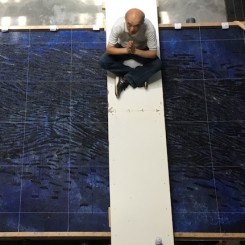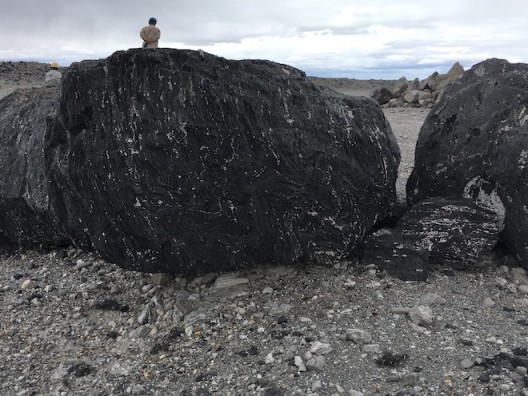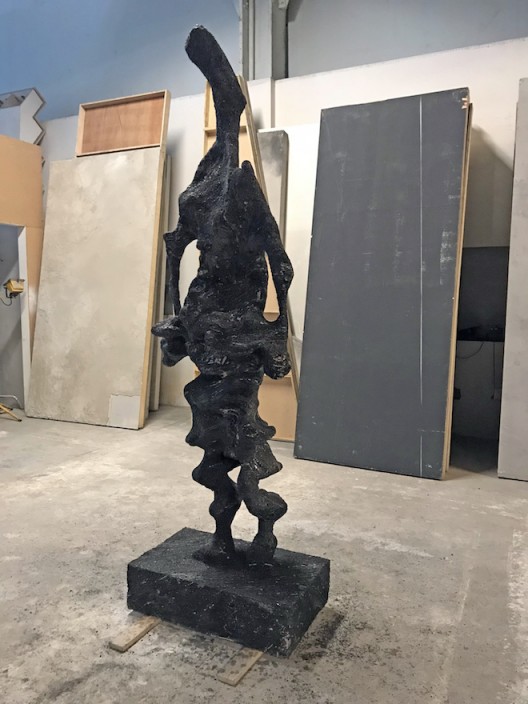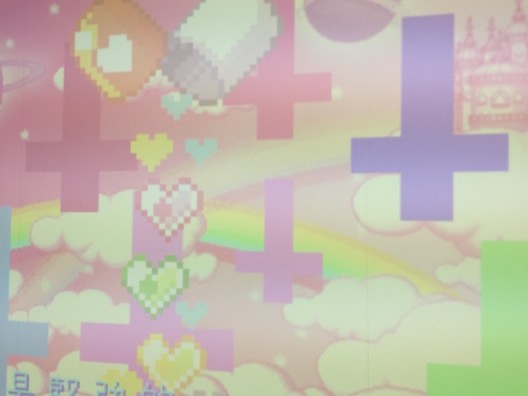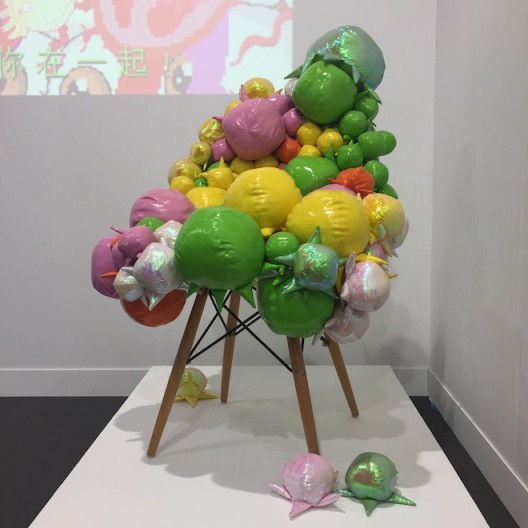內幕 Insider
Welcome to our first edition of Insider. Supported by leading advocate and supporter of contemporary art and artists in China, DSL Collection, Insider examines developments and interrelations between art world networks and technology, both cornerstones of DSL’s operating mantra.
In this issue Thomas Eller considers a new approach to the gallery system being explored by Rén Space in Shanghai.Upcoming issues will look at blockchain technology, art social networks and Virtual Reality.
New technology promises the transformation of how the art world works—”disrupting” established ways. But not all promises are kept. So while we all should be curious about new technolgies, it pays to be skeptical too. We look forward to giving you more Insider information soon.
Gallery 2.0
*This article originally appeared in Ran Dian 6, Spring / Summer 2018 – out now.
These days it seems where ever you turn there are complaints about the gallery system. New York has been discussing the “mid-sized gallery squeeze” for years now—to no avail. The cards are still stacked in favor of the heavy-hitting galleries, like David Zwirner, Hauser & Wirth, Gagosian, you name it. The underlying dynamic—just to sum it up in the briefest way possible—there is too much (sometimes funny) money going around looking for a safe investment outside the scrutiny of more established market places. “Very bankable artists,” as Georgina Adams calls the small roster of artists floating on top of an ocean of global art production, absorb more than the lion’s share of capital thrown into the art world. With the costs of operation sky-rocketing (participation in art fairs around the globe is almost mandatory, if the galleries want to survive), the mid-sized galleries are experiencing not only the financial crunch—but also a more existential threat—the constant poaching of their most important artists by the so-called mega-galleries. This is especially hurtful, as many of the mid-sized galleries have heavily invested in building the careers of their artists for extended periods of time, sometimes decades, just to see them lured away by some bigger gallery that can offer them access to the next level of the art world. What that essentially means is that the previous gallery model, made successful by Leo Castelli, viewed artists as their most important clients. Artists had to be nurtured, their careers developed and their work distributed in important collections and museums worldwide, this model has ended, disempowering artists in its wake. Today artists are not rewarded if they stay with the same gallery for the long-term and then enter art history.
The talk in NY now is that the Castelli-model has been replaced by the Gagosian-model. What does this mean? The important clients of the gallery now are the ones paying top-dollar and demanding the most collectible (aka bankable) art from top-tier galleries. Almost in an almost mythical way—everything a mega-gallery touches these days turns to gold. Galleries such as David Zwirner offer the hope of impressive returns: i.e. the roster of artists, which he is selling at very high prices still afford some room for upward speculation, simply because he is showing them. Rich people snap up the work, knowing they can flip them at a profit in the near future. So it is not the artists anymore that define the course of the development in art. It is the collectors and the galleries who are managing their desires.
This creates a top-down market situation and the ensuing dynamic shifts all attention to the top bracket of the art world food-chain and starves out the creative breeding ground for young emerging artists. For anyone wanting to learn more about this—Llucià Homs has founded “Talking Galleries”—one of the most important platforms to discuss developments in the art market. The website is a very useful archive of some of the most insightful discussions in those matters. However, there is also a strange sense of hapless helplessness emanating from most of the statements by international art dealers and galleries. We can attribute this to the unwritten code of ethics that most galleries work by and that is enforced by one of the most important institutions in the art market, Art Basel. The insistence on brick-and-mortar galleries and the idea of artist-representation are the two pillars that the Western gallery model rests on—both of which are increasingly under fire from armies of freelance art consultants, using online services to cater to clients worldwide.
Interestingly enough though, it has been Marc Spiegler, director of Art Basel, who most adamantly has been warning galleries of disruptive models posing a threat to the traditional gallery system. And of course he had been talking about everybody’s favorite art world pundit Stefan Simchowitz, who figures that the situation in the art world was ripe for disruption. “There were too many galleries and too much dominance. I decided that financing artists at a studio level would be the business. My preference would be to exchange financing for work. I asked artists what their fantasies are. I financed them and usually they ended up making great shit. But then I had to negotiate complex deals with their galleries, and the galleries did not like it,” he told Los Angeles Magazine.
Now this is interesting—galleries that are forced to invest most of their effort and resources into their quest to enter the upper echelons of the art world and subsequently do not or cannot supply their artists with enough resources to create more compelling art—find themselves put under pressure from yet another angle—a collector/investor that begins to steal the galleries’ market share. Artists however love it! They revel in the attention and the opportunities that come with it.
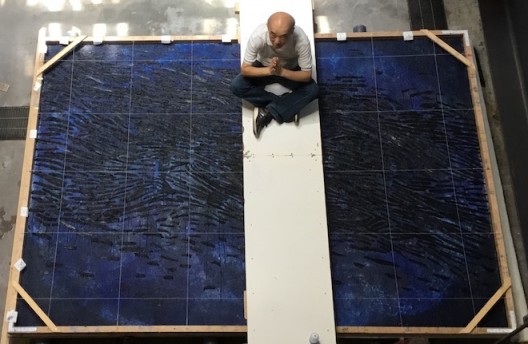
Yu Youhan in his studio with “Jumping the Dragon Gate” 2016 (image courtesy Rén Space) 余友涵与“跳龙门” 2016 (图片提供Rén Space)余友涵,“再生的1987壁画” 1-3 在余德耀美术馆,上海,上海星空II,2017-2018(图片提供Rén Space)
How is the situation in China? The gallery system is nowhere near as developed as in the West—for better or worse. After a few golden years, the market for Chinese contemporary art has collapsed in the wake of the bursting of the auction bubble. Initially it had seemed that Chinese artists have always have had a lot more power to shape their markets than their Western counterparts. It is not uncommon to see one artist exhibit in three different galleries in the same city at the same time. Whenever an artist is hot, everybody wants a piece of him. Artists of course indulge themselves in their moment, only to realize that next year, there is someone else hogging the spotlight. To put it in more structural terms: the ties between artists, galleries and collectors in China are not characterized by the same kind of long-term commitment—with the exception of course of a handful of highly professional galleries that opened in the very early days of the contemporary art movement in China. But even though, there is no example like the Picasso-Kahnweiler-bond that propelled them both into art history. There is however a good roster of mostly “self-propelled” artists that have built themselves a strong support system (“guanxi network”) that makes them “almost” immune to outside market forces in ways unthinkable in the West. To call this an artist-centric model would be highly speculative, and it is unclear if this approach can lead to long-term and sustainable careers that will reward artists with lasting positions in art history. (A part of the problem is China’s museum landscape, but that is another topic for another day).
What is indisputable though is the strength of a few artists in China that transcend their gallery affiliations, which, for better or worse, leaves the door open for another type of disruptive business proposition in the gallery realm.
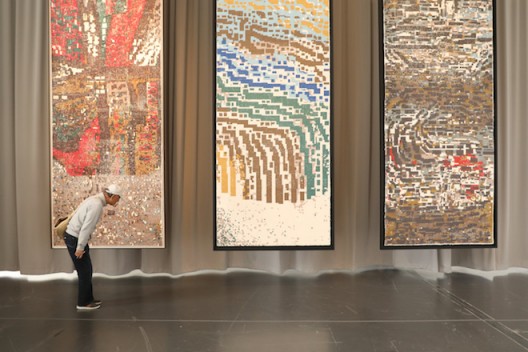
Yu Youhan, Panel 1, 2 and 3 of “New Life; 1987 Mosaic” at the Yuz Museum, Shanghai, Shanghai Galaxy Show, 2017-2018 (image courtesy Rén Space)
余友涵,“再生的1987壁画” 1-3 在余德耀美术馆,上海,上海星空II,2017-2018(图片提供Rén Space)
In the past four years, Jung Lee, founder of Rén Space in Shanghai has chosen an interesting top-down/bottom-up approach that begins at the level of art production. A previous mission statement reads: “Ren space aims to examine and challenge the accepted paradigms of the current art ecosystem, including production, distribution and consumption of art. We believe the current model no longer offers an optimal strategy in this period of transformative [scientific and technological changes]. While we seek to be a catalyst for the artists, we continually expand and redefine the parameters of collaboration among artists, fabricators, collectors, and the public.”
Not unlike Simchowitz, Jung Lee thinks that it is important to support artists with production, but the big difference is, he is working with well-seasoned artists, challenging them directly on the production value of their works. He can do this because of a climate particular to Asia, a strong sense of material sensibility and an incredibly long tradition of connoisseurship for the arts that shames any Western civilization, including large parts of Europe.
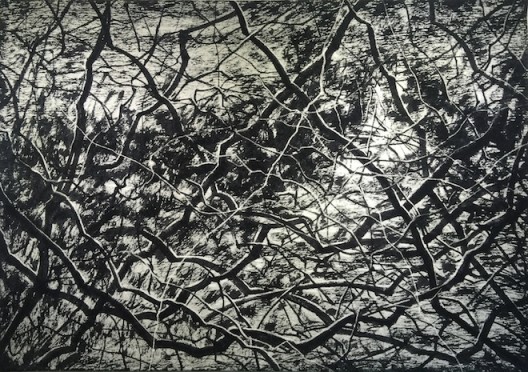
Zeng Fanzhi “Untitled” 2015, off canvas | tapestry (image courtesy the artist and Rén Space) 曾梵志,“无题”,2015,画布外|挂毯(图片提供Rén Space)
For example, we can look at the monumentally delicate paper mosaic works that Ren Space produced for and with Yu Youhan which were presented last year during the art fair season in Shanghai’s Yuz Museum. They consisted of three sets of five panels of handcrafted paper mosaics—fabricated by specialists in Japan in close collaboration with the artist who spent considerable time there; they were intricately assembled after a glass mosaic that the artist had originally created for his alma mater—works which were ultimately destroyed during the university’s expansion. “New Life”, as the paper mosaic suite is titled, is a reincarnation of this former public art projects. The images consist of an abstract pattern, a blend of specimens in a petri dish with highly abstracted fingerprints—not easy to decipher. Made to scale of the original public art piece, each of the four panels measures 465 x 160 cm and has been created from paper pulp and natural pigments one paper pixel at a time. The result is an amazingly dazzling surface—fragile, but work made to withstand the ages.
Another example is a recently finished sculpture by Zhan Wang—a larger-than-life Giacomettiesque human figure made from a volcanic boulder. The project took over a year to complete, due to technical difficulties with the nature of its composition: volcanic rock is formed of very uneven matter, extremely hard components mixed in with very brittle stuff. The figure was chiseled from the boulder using the latest 3d-routing technology applying an array of different routing bits to accomplish the task.
One could call this the masterpiece-approach a potential disruptor to the gallery model. Artists like Zhang Peili and Zeng Fanzhi have already collaborated with Ren Space’s Lee Jung to go beyond their usual artistic practices and ventures into tapestry and other “very fine art practices”—all of them highly desirable and collectible. There is something very compelling about this approach that seems to elevate art from a commodifying production model towards a process that creates an advanced level of connoisseurship. The intriguing thought is that, should this approach be successful, it would not be far from a Renaissance “patron-artist” dynamic where a few VERY sophisticated art patrons challenged “their” artists to achieve utmost excellence in their art in order to compete with their peers in other cities.
